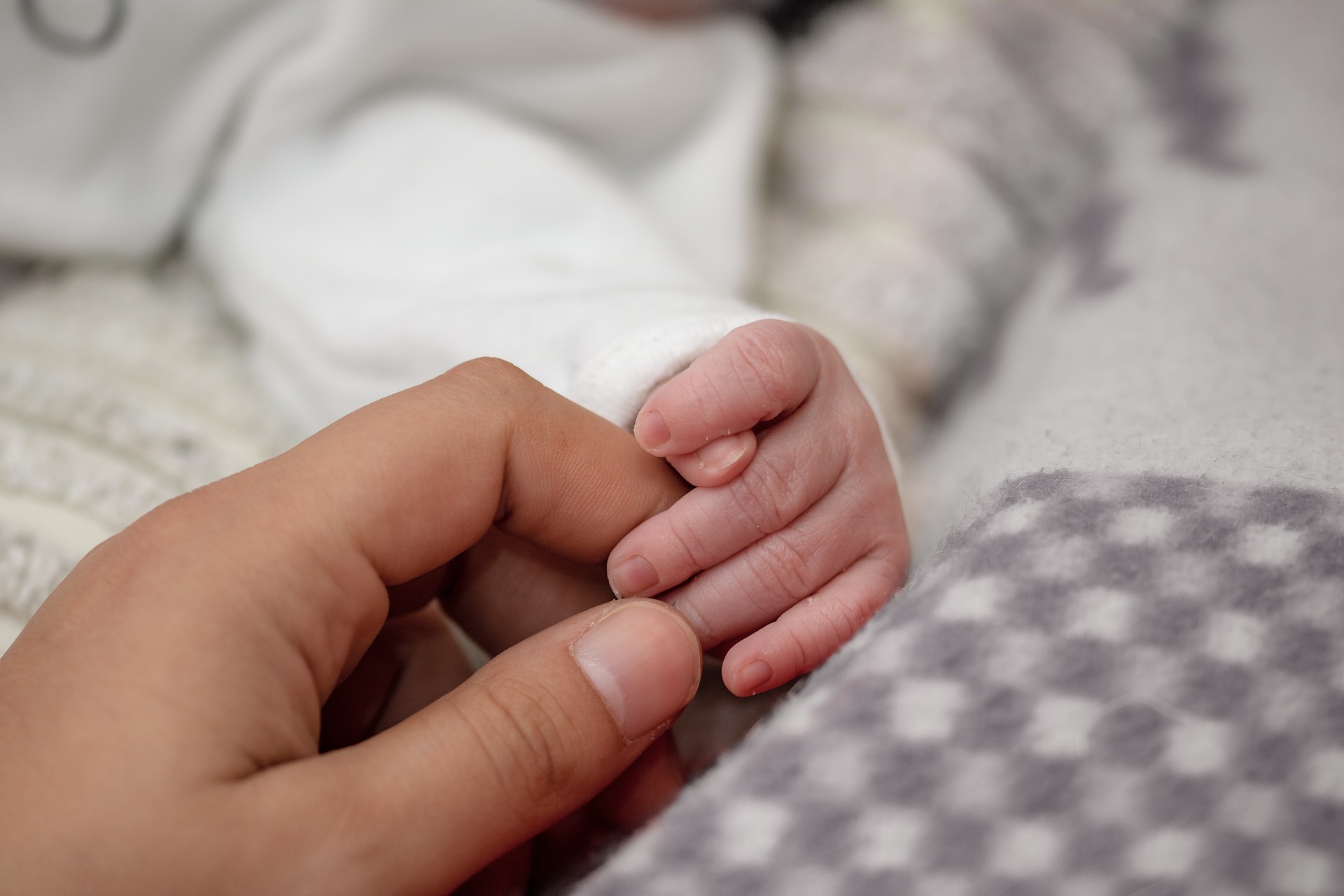Acrocyanosis comes from the Greek “akron,” meaning extremity, and “kyanos,” meaning blue. The term literally means “blue extremities” and is common in newborns after delivery (Das & Maiti, 2013).
What is acrocyanosis?
Acrocyanosis describes a temporary bluish discoloration of a healthy newborn’s hands, feet, and sometimes the area around the mouth. This occurs when babies’ small blood vessels constrict after birth in response to their new, outside-of-the-womb environment. It is a common finding in healthy newborns and rapidly adapts as the baby’s circulation and body temperature stabilize (Eichenwald, 2025; Queirós et al., 2021).
Does acrocyanosis go away?
In most cases, the blue coloration fades within 24–48 hours after birth as your baby adapts to life outside the womb. However, it can occasionally reappear when your baby feels cold (i.e., after a bath or diaper change) or when they cry (Queirós et al., 2021).
You can check your baby’s mucous membranes, like the tongue, to distinguish between typical acrocyanosis and something more serious. The mucous membranes are generally not involved in more serious cases (Pahal & Goyal, 2025). If your baby’s tongue is still a healthy pink, they are well-oxygenated and the temporary blueness will disappear.
Tip: Gentle warmth is an excellent way to help avoid the blueness that can occur in your newborn. Hold your baby, use skin-to-skin contact, and keep your home comfortable. This helps you avoid freaking out, and physical contact supports their social and neurophysiological development (Carozza & Leong, 2021).
Common Signs & Symptoms of Acrocyanosis
- Blue or red discoloration of the hands, feet, or area around the mouth
- Blueness is symmetrical (both hands or both feet)
- Cool or cold fingers and toes
- Mild swelling
- Clamminess or sweating
Other Types of Cyanosis
Peripheral cyanosis, which includes acrocyanosis, refers to cyanosis of the extremities. Peripheral cyanosis is often benign, though it can be caused by sepsis, shock, or venous obstruction.
Central cyanosis is often indicative of a more serious problem. Unlike acrocyanosis, central cyanosis refers to low arterial oxygen saturation and affects the core of the body (e.g., lips, tongue, cheeks, mouth, or torso). Newborns often have central cyanosis until 5 to 10 minutes after they are born, and then their oxygen saturation rises to normal levels. However, if it extends longer than 10 minutes post-birth, it can indicate a more serious issue, such as a heart, lung, or blood condition (Eichenwald, 2025).
A medical provider should evaluate persistent cyanosis following birth.
To determine the cause of your baby’s cyanosis, a hospital visit may be vital. Diagnostic tests, like oxygen saturation, blood tests, chest radiograph, and echocardiograms, can help to assess the severity and cause of your baby’s cyanosis. Head to the ER (LINK TO BLOG) if they have some blue coloration…
- that does not fade with warmth or as they stop crying.
- on the tongue or torso.
- and difficulty breathing.
- and lethargy.
Treatment and Care
Acrocyanosis itself does not require treatment. It resolves naturally as your baby’s circulatory system adjusts. The best approach is gentle, attentive care:
- Keep your baby comfortably warm.
- Use soft layers rather than overheating.
- Maintain calm, responsive caregiving to support your baby’s regulation and bonding.
If you ever feel uncertain or if your baby’s color change seems persistent, trust your instincts and reach out to your pediatric healthcare provider.
References
Carozza, S., & Leong, V. (2021). The Role of Affectionate Caregiver Touch in Early Neurodevelopment and Parent–Infant Interactional Synchrony. Frontiers in Neuroscience, 14, 613378. https://doi.org/10.3389/fnins.2020.613378
Das, S., & Maiti, A. (2013). Acrocyanosis: An Overview. Indian Journal of Dermatology, 58(6), 417–420. https://doi.org/10.4103/0019-5154.119946
Eichenwald, E. C. (2025). Approach to cyanosis in the newborn—UpToDate. UpToDate. https://www.uptodate.com/contents/approach-to-cyanosis-in-the-newborn/print
Hochmayr, C., Auckenthaler, M., Fink, F.-M., Kiechl-Kohlendorfer, U., & Griesmaier, E. (2023). Differential diagnosis of blue toes in a newborn baby: Might have been maternal infection with COVID-19? The Lancet, 401(10384), e20. https://doi.org/10.1016/S0140-6736(23)00335-5
Pahal, P., & Goyal, A. (2025). Central and Peripheral Cyanosis. In StatPearls. StatPearls Publishing. http://www.ncbi.nlm.nih.gov/books/NBK559167/
Queirós, C., Santos, M. C., Pimenta, R., Tapadinhas, C., & Filipe, P. (2021). Transient Cutaneous Alterations of the Newborn. https://www.emjreviews.com/en-us/amj/dermatology/article/transient-cutaneous-alterations-of-the-newborn/




